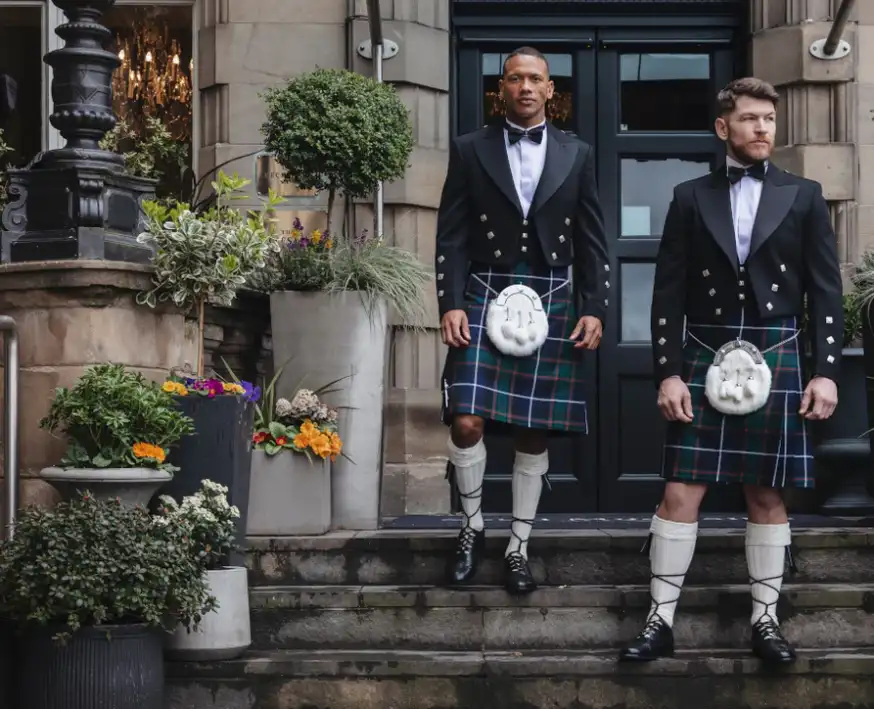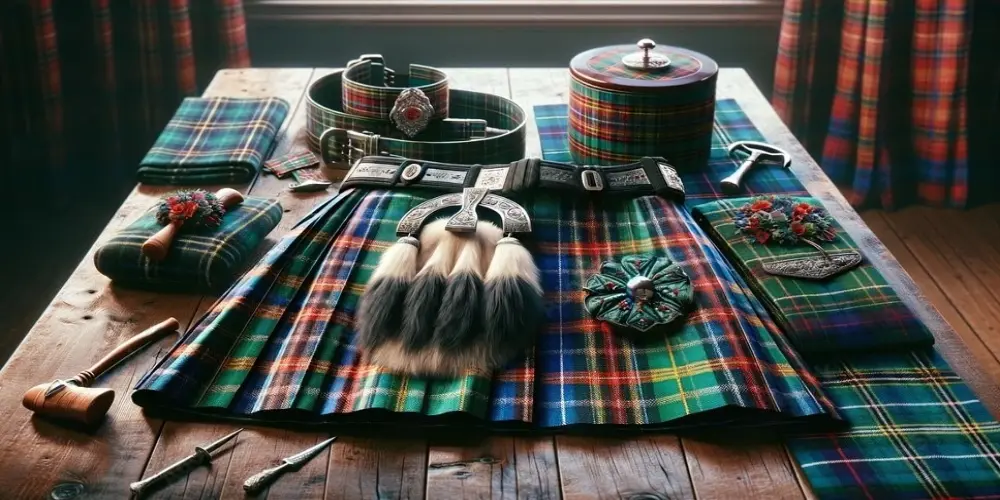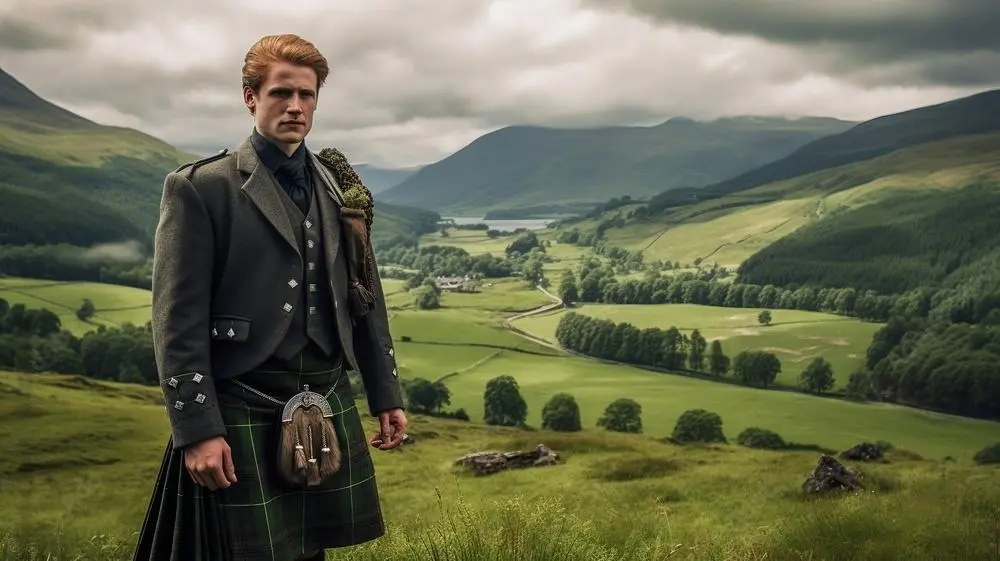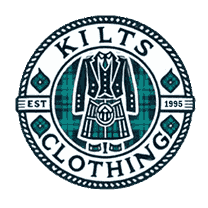Formal Kilt: A Timeless Garment for Modern Elegance

Mens Kilt have long been a symbol of Scottish heritage, and their elegance and tradition have made them a popular choice for formal occasions worldwide. The formal kilt is a unique and sophisticated garment from weddings to black-tie events.
This article delves into kilts' history, types, and significance, providing a comprehensive guide on how to wear and accessorize them for various occasions.
History of the Kilt
- Origins in Scotland: Mens Kilt date back to the 16th century and were originally worn by Highland clan members. The traditional Scottish kilt remains a symbol of national pride.
- Cultural Significance: Kilts symbolize Scottish identity and pride. They have been worn in battle and at important ceremonies throughout history.
- Evolution Over Time: From traditional great kilts to modern designs, kilts have evolved while retaining their cultural essence. Modern kilts now include variations like utility kilts and sports kilts.
Types of Kilts
- Traditional Kilts: Heavy wool, deep wrinkles, and tartan patterns representing clans. They are often worn during Highland games and other cultural events.
- Modern Kilts: Lighter materials, varied designs, suitable for contemporary wear. Modern kilts are popular in casual and business casual settings.
- Sport Kilts: Functional, often used in athletic events. Sport kilts are designed for comfort and flexibility during physical activity.
- Utility Kilts: Practical with pockets, blending traditional style with modern needs. Utility kilts are ideal for everyday wear and outdoor activities.
- Casual Kilts: Comfortable, everyday wear options. Casual kilts can be worn in various settings, from casual gatherings to festivals.
What is a Formal Kilt?
- Definition: A refined version of the traditional kilt, made for elegance and sophistication. Formal kilts are often worn at weddings and formal events.
- Materials: Typically high-quality wool, ensuring durability and a sharp appearance. Some formal kilts may also incorporate luxurious fabrics like silk or cashmere.
- Occasions: Ideal for weddings, black-tie events, and other formal gatherings. Formal kilts are a staple in Scottish wedding attire.
Materials Used
- Wool: The most common and traditional fabric, known for its warmth and durability. Wool kilts are suitable for both formal and casual wear.
- Blended Fabrics: Combining wool with synthetic fibres for added flexibility and comfort. Blended fabrics are often used in utility and sport kilts.
- Leather: Occasionally used in modern and utility kilts for a unique look. Leather kilts provide a rugged and stylish alternative to traditional fabrics.
Design and Patterns
- Tartan Patterns: Traditional Scottish designs representing family or clan heritage. Tartan kilts are often custom-made to reflect individual lineage.
- Modern Designs: Contemporary patterns for a fresh look while respecting tradition. Modern kilts may feature solid colours or innovative patterns.
- Custom Options: Personalized designs tailored to individual preferences. Custom kilts allow for unique combinations of colours and fabrics.

How to Wear a Formal Kilt
- Please start with the Kilt: Wrap it around your waist, pleats at the back, and an apron overlapping at the front. Ensure it is fastened securely.
- Add the Kilt Belt: Secure the kilt further with a decorative belt. The kilt belt adds an element of style and tradition.
- Please put on the Sporran: Center it on the apron, hanging from a chain or strap. The sporran is both functional and decorative.
- Wear the Kilt Jacket: Choose a Prince Charlie or Argyll jacket for formal occasions. The jacket should fit snugly over a dress shirt.
- Accessorize with a Kilt Pin: Attach it to the bottom right-hand side of the apron. The kilt pin keeps the apron in place and adds a decorative touch.
- Complete with Kilt Socks and Shoes: Wear a kilt hose (socks) with flashes and ghillie brogues. Ghillie brogues are traditional shoes that complement the formal kilt outfit.
Accessories for Formal Kilts
- Kilt Belt: Provides both security and a stylish touch. A kilt belt is typically wider than a regular belt and features ornate buckles.
- Sporran: Essential for carrying small items and enhancing the kilt's appearance. Sporans come in various styles, from casual to formal.
- Kilt Pin: Adds a decorative element and keeps the apron in place. Kilt pins often feature traditional Scottish symbols.
- Ghillie Brogues: Traditional shoes with long laces that wrap around the ankle. Ghillie brogues are essential for completing the formal kilt look.
- Kilt Socks and Flashes: Complement the outfit and add colour accents. Flashes are small garters that hold up the kilt socks.
- Kilt Jacket and Waistcoat: Complete the formal look. The Prince Charlie jacket is a popular choice for formal events.
Occasions for Wearing a Formal Kilt
- Weddings: Suitable for grooms, groomsmen, and guests, adding tradition and elegance. Wedding kilts are often paired with specific tartan patterns.
- Black-Tie Events: Perfect for formal dinners and galas paired with a Prince Charlie jacket. Black-tie kilt attire includes a kilt, jacket, and accessories.
- Cultural Events: Celebrations like Highland Games and Burns Night. Wearing a kilt to cultural events shows respect for tradition.
Kilt Etiquette
- Dos:
- Wear the kilt with pride and respect for its cultural significance. Proper kilt etiquette is important for formal events.
- Ensure the kilt fits well and is worn correctly. A well-fitted kilt enhances the overall appearance.
- Choose appropriate accessories that match the formality of the event. Matching accessories elevate the kilt outfit.
- Don'ts:
- Avoid treating the kilt as a costume. It's a garment with deep historical roots.
- Don't mix casual and formal elements inappropriately. Stick to either a casual or formal look based on the event.
Buying Guide
- Quality: Look for high-quality materials and craftsmanship. Quality kilts last longer and look better.
- Fit: Ensure accurate measurements or opt for custom-made kilts for a perfect fit. A properly fitted kilt is comfortable and stylish.
- Design: Choose a tartan pattern with personal or familial significance. Tartan designs can reflect your heritage.
- Accessories: Purchase matching accessories to complete the look. Accessories like kilt pins and sporrans are essential for a polished appearance.
Custom-Made vs. Ready-Made Kilts
- Custom-Made Kilts:
- Tailored to fit individual measurements. Custom kilts offer a perfect fit.
- Personalized designs and patterns. Choose unique tartans and materials.
- It is a higher cost but ensures a perfect fit and unique look. Custom kilts are an investment in quality.
- Ready-Made Kilts:
- Convenient and often more affordable. Ready-made kilts are great for those on a budget.
- Available in standard sizes and common tartan patterns. Ready-made kilts offer a variety of designs.
- It is ideal for those needing a kilt quickly or on a budget. Ready-made kilts are readily available.
Caring for Your Kilt
- Cleaning: Dry clean to maintain fabric integrity and pleat sharpness. Proper cleaning extends the life of your kilt.
- Storage: Hang the kilt to prevent wrinkles and maintain its shape. Use a kilt hanger for best results.
- Repairs: Address any damage promptly with professional repairs. Keeping your kilt in good repair ensures it always looks its best.
Alterations and Adjustments
- Waist Size: Adjust kilt straps for a snug fit. Proper fit is crucial for comfort.
- Length: Ensure the kilt falls to the middle of the knee. The correct length enhances the kilt's appearance.
- Pleats: Maintain the pleats' sharpness through professional pressing. Well-maintained pleats are a hallmark of a quality kilt.

Cultural Significance
- Scottish Heritage: Kilts symbolize pride, tradition, and identity. Wearing a kilt connects you to Scottish culture.
- Irish Kilts Often feature solid colours or specific tartan patterns, reflecting Irish culture. Irish kilts are worn during cultural celebrations.
- Wearing Kilts: Connects individuals to their ancestry and cultural roots. Kilts are a proud symbol of heritage.
Modern Trends
- Casual Kilts: Lightweight and comfortable for everyday wear. Casual kilts are perfect for relaxed settings.
- Utility Kilts: Functional with pockets and durable materials. Utility kilts are practical for a variety of activities.
- Fashion Kilts: Incorporate modern designs and fabrics. Fashion kilts offer a contemporary twist on a traditional garment.
Celebrity Influence
- Ewan McGregor: Often seen wearing a kilt, celebrating his Scottish heritage. McGregor's kilt outfits have been widely admired.
- Gerard Butler: Wears kilts at premieres and events, promoting Scottish culture. Butler's kilt appearances have boosted their popularity.
- Sam Heughan: Known for his role in "Outlander," he often wears kilts in and out of character. Heughan's kilt-wearing has influenced many fans.
Kilt Accessories: Completing the Look
- Kilt Belt: Essential for securing the kilt. Kilt belts are typically wider and more ornate than regular belts.
- Sporran: Functional and decorative pouch. Sporans come in various styles, including day, semi-dress, and dress sporrans.
- Kilt Pin: Adds elegance and keeps the apron in place. Kilt pins are often decorative and feature traditional designs.
- Ghillie Brogues: Traditional shoes that complete the outfit. Ghillie brogues are known for their distinctive lacing.
- Kilt Socks and Flashes: Provide color and hold up the socks. Flashes are small garters that add colour to the kilt outfit.
- Kilt Jacket and Waistcoat: Necessary for formal attire. The Prince Charlie jacket is a popular choice for formal events.
Kilt Patterns: Choosing the Right Tartan
- Traditional Tartans: Represent family or clan heritage. Choosing a traditional tartan connects you to your ancestry.
- Modern Patterns: Offer contemporary designs for a unique look. Modern tartans are great for those looking for something different.
- Custom Options: Tailored patterns for personal significance. Custom tartans allow for unique and personal designs.
Who Wears Kilts?
- Men: Traditionally worn by men for formal and cultural occasions. Formal Kilt are often worn during significant events.
- Women: Increasingly worn by women in modern fashion. Female kilts are becoming popular in various fashion circles.
- Celebrities: Popularized by celebrities at events and in media. Celebrities have played a significant role in bringing kilts into mainstream fashion.
Conclusion
The formal kilt is more than just a garment; it symbolizes tradition, elegance, and cultural pride. Whether you're attending a wedding or a formal event or celebrating your heritage, wearing a kilt connects you to a rich history and showcases a timeless style. Invest in a quality irish kilts for men, learn how to wear it correctly, and embrace the unique charm it brings to any occasion.
FAQs
A formal kilt is a refined version of the traditional Scottish kilt, typically made of high-quality wool and worn for weddings, black-tie events, and other formal occasions. It includes accessories like a kilt jacket, sporran, and kilt pin.
Yes, a kilt is suitable for formal events such as weddings and black-tie occasions. It should be paired with appropriate accessories like a kilt jacket and sporran to complete the formal look.
Yes, wearing a belt with a formal kilt is customary. The belt not only secures the kilt but also adds a decorative element, often featuring an ornate buckle.
A casual kilt is usually lighter and made from materials like cotton or polyester for everyday wear, while a traditional kilt is made of wool with tartan patterns and is often reserved for formal or cultural occasions.
A kilt is a traditional Scottish garment, while tartan refers to the patterned fabric used to make kilts. Tartan patterns can represent specific clans, regions, or organizations.
Yes, you typically tuck a shirt into a kilt to maintain a neat and polished appearance. This is especially important for formal events where a smart presentation is required.

